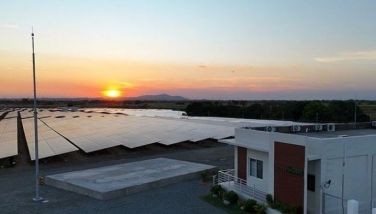Survival – the Ivatan way

The Ivatans are an Austronesian ethnolinguistic group inhabiting the Batan islands – Batanes and Babuyan islands in the northernmost Philippines.
Batanes is actually closer to Taiwan than it is to the nearest island of Luzon. I was fortunate to finally visit Batanes and learn more about their food culture.
I hope to help them form a Slow Food community (www.slowfood.com) to preserve their interesting habits which have made them survive typhoons, rains and all the weather disturbances affecting their small island.
A few months before the rains come, an Ivatan already finds a pig to buy, to make the family’s stockpile of meat for the wet or rainy season. The pork meat is salted and then fried, and kept submerged in its own oil or lard to preserve it for many months to come.
This is in preparation for the months when one cannot go to market for meat. The market vendors may have no meat to sell for the long duration of rainy season. At this time, Ivatans dig into their treasure trove of salted pieces of pork, sometimes even a palm-sized portion is already enough for a family.
Because when the weather is bad and one cannot find fresh produce or meat, a family prepares its survival dishes – “meatballs” made from felled banana trunks, the core of which is diced and mixed with fish or some pork. Other survival fare will be root crops like sweet potato, gabi or taro and cassava.
Even fish has to be gutted and dried but only to be salted and preserved for future use.
There are many kinds of paopao or dried fish which becomes the protein source for rainy days. Famous among all is the dorado, or mahi mahi, a fish that is plentiful in the coasts of Batanes. These are gutted, but are not sold yet until the season for selling comes. While one can use the innards for soup or other fare for free, the fish meat is carefully preserved, dried and salted – and saved for future use and sale.
The flying fish or dibang is also known for being salted and dried, and the best part to eat is the bone, crunchy and tasteful. It’s like when we are not yet aware of the taste of bangus belly and we just eat the meat around it, avoiding the blackish jelly-like parts. When we finally try the belly, our lives get changed forever. The same happens with the bony part of the flying fish. When I saw a local eat the bones first, I followed suit and I discovered the best part of this fish.
Root crops are plentiful and can substitute for rice anytime. The locals simply cut them into pieces small enough to fit a pot – and the juice of these boiled root crops is a sweet liquid you can take as soup with all the vitamins intact.
As we hold our kabaya, a giant leaf that serves as our “plate,” we take a little of the fish, the meatballs, root crops and a sampling of the fish – one-day-old dibang with bones fried crisp and the tender dorado just wrapped in banana leaves and grilled over slow fire.
The local vegetables are similar to our kangkong, called rerey, and other wild camote-like shoots called yayud. They also cook taro vines called venes, similar to what we call takway, very much a local delicacy. The Batanes garlic and onions are also more pungent and are known to be a good sauce to fish and other proteins.
All these food preservation practices of the Ivatans could be applicable to our food insecurity state of today. The Ivatans knew when food was plenty and prepared well for the time when food would be scarce. Time was when a family could only buy one pig to last them through the year. But last it did, and tradition allows them to do all the preservation techniques with ease. Salt the pork, submerge in fat and lard. Take a small piece at a time and share with family. Dry the fish. Store for future use. Grow root crops, they are resilient to weather changes. Boil and eat. Simple practices like these ensure a sustainable lifestyle for the whole clan, the whole tribe.
In olden times, they are lucky to have one boat carry provisions once a year from Luzon while their farmers brought their cattle and pigs to trade for other supplies. These days, there are cargo ships that regularly ply the Pangasinan-Batanes routes as well as daily flights on major carriers.
The pandemic taught them to look around and appreciate their self-sufficiency because they survived even while being locked down from Luzon and the rest of the country. They went back to agriculture, fishing and farming, which the youth then had unfortunately started to abandon as a career option. Now, the youth may think twice and hopefully will take up the challenge to be farmers.
It really is wonderful to know that the Ivatans know how to survive through long rainy seasons and dry spells, long before food security was a topic to be concerned about. To them, it was simply living. To go with the flow of Nature and to know when to hunt and gather, to harvest and preserve and to still have enough to eat until the next good weather comes around.
So there is much to learn from our Ivatan brothers and sisters. It also is easier to manage as Batanes is an island and that has its benefits. Rather than feel isolated, you can actually feel independent and self-sufficient.
You must consider a trip to Batanes to better appreciate Nature’s bounty and how to live with the seasons rather than curse climate change. We can certainly learn a thing or two from them.
- Latest
- Trending


























